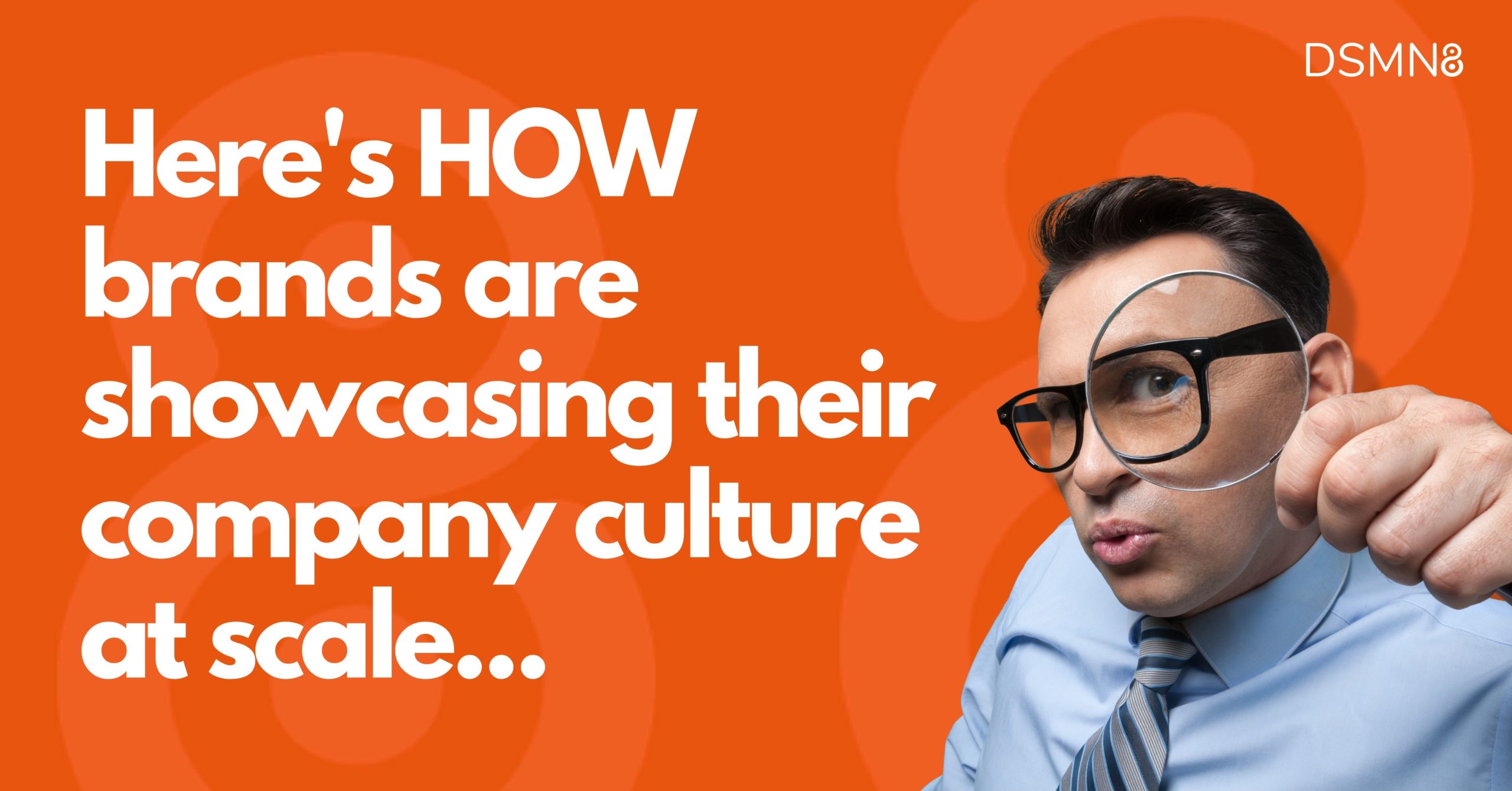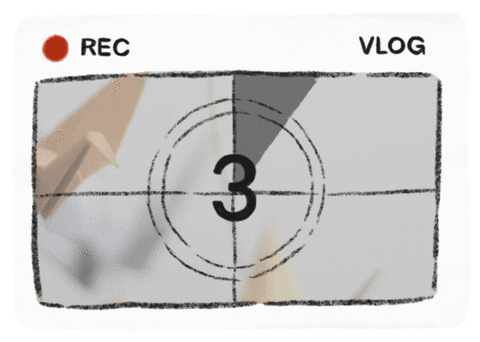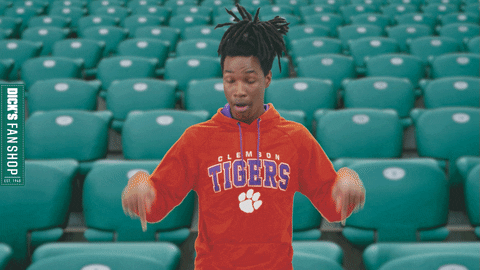
Company culture is the personality of a brand. The personality is defined by its values, ethics, work environment, mission, and much more.
In days past, brands seemed to put little emphasis on positive company culture, and people relied on stories and gossip to get an idea of what it was really like to work at a company.
You’ve likely heard tales of tech-titans such as Google attempting to showcase company culture by having slides in their offices with ball pits at the bottom, but how could anyone have known for sure without visual proof? Brands have famously been strict on social media policies, often asking that employees do not share work-related content within their social networks.
This aura of mystery worked well for a lot of brands, as it meant they could avoid possible scrutiny for their operational behaviors. Whether it was fashion powerhouses burning unused clothes, or CEOs screaming at assistants in a Devil Wears Prada fashion, what happened at work stayed at work ✋
However, in recent years, even some of the biggest businesses have realized the many benefits that come with showcasing positive company culture. Whether to attract top candidates or to boost staff morale and productivity, brands are putting a real focus on their company culture and utilizing social media as a porthole to showcase it and to let people in.
Imagine the feeling of having your CEO or Managing Director in the office for a day. Suddenly everyone is on their best behavior, and absolutely everyone does everything by the book. Well, since some of the world’s biggest brands have started “letting people in,” they’ve begun conducting themselves in a similar manner. After all, in the age of social media and Twitter shaming, no one wants to get told off 🤷♂️
With the increased emphasis on/importance of social media, marketers are focusing their attention on social media as a way of giving the public a look at life at the company. Through photo and video content, and calling upon their employees to create it, share it, and generate engagement.
Jump to:

The Goat Agency Daily Vlog
One particular company that has championed this idea is London-based influencer marketing agency The Goat Agency. The Goat has pioneered the idea of an office-based daily vlog, which at the time of writing this has an impressive 245 episodes under its belt 👏
The vlog intends to document the goings-on and meteoric rise of the company, and yet it does so much more. The vlog serves as a porthole that looks into daily operations at the company and gives an authentic look at the work environment, which is typically challenging to display.
Before the days of social media, a prospective candidate might have taken to the likes of Glassdoor or Fairygodboss to hear from real employees. However, even these can be tough to trust as often employees will leave reviews while still working at the company. Because employers often encourage them to do so, it’s unlikely anything negative will be said. The Goat vlog gives us a look at the work environment and the people who work there. For a prospective candidate, deciding whether or not you’ll get along with colleagues/fit in could be a deciding factor.
The vlog benefits both their employer brand and their brand as a whole, as for many LinkedIn users, they’ve stumbled across The Goat through word of mouth, and the video/audio content gives an in-depth look into what they do in a more easily-digestible manner.
Founded just five years ago, LinkedIn ranked The Goat Agency as #8 in its top startups to work for in the UK. They also produce and share podcasts with both guests and employees alike 🎧
Though the vlog does The Goat Agency a huge service, it is worth mentioning that they are also entertaining, easily accessible, and quick to digest.
Most episodes clock in at around the five-minute mark, meaning just about anyone can tune in to the latest episode if they’ve got five minutes to spare.

Building Company Culture at Gymshark
As we’ve seen with a lot of trend predictions recently, it seems that the consensus is that brands will be striving to become more employee-centric, and no one it seems is doing a better job of this than fitness apparel tycoons Gymshark 💪
Since its inception in 2012, Gymshark has seen exponential growth year on year. So much so that four years in, they found themselves featured in The Sunday Times Fast Track. As is noted in the feature, Gymshark did not incorporate traditional marketing tactics early on. Instead, they harnessed the power of social media and influencers to build recognition and a reputation.
Gymshark clearly put a heavy emphasis on positive company culture as a means of building their employer brand. The company’s LinkedIn serves almost entirely for this purpose, with a great deal of employee-centric photo and video content, and little-to-no mention of their products. Head to the “life” section of their page to hear it from the brand themselves:
“Our culture of innovation and community is central to everything at Gymshark. We work hard to create the latest in performance wear, but there’s always time for lunch with a colleague.”
Gymshark recognized early on that the key to their growth would be not just their products, but the culture they build from within. They continue to build on this with the likes of their #Gymshark66 campaign, which cleverly builds on their employer brand through the use of their established company culture, and also pushes for a more customer-centric approach, all by incorporating User-Generated Content.
The campaign asks users to pledge to change their fitness habits in just sixty-six days, in order to establish a routine that lasts a lifetime. Gymshark sets a challenge each week and encourages participants to document the process using the campaign hashtag. Not only does this raise brand awareness using User/Employee-Generated Content, but it incorporates a sense of community among customers and employees alike.

Employee Advocacy Meets User-Generated Content
Another brand doing an exemplary job of showcasing life at the company is coffee-colossus Starbucks.
Starbucks could be hailed as one of the founding fathers of modern employee influence, as they have long recognized the power of their employees, whom the company refers to as ‘Partners’ ☕️
Starbucks launched “Starbucks Partners” accounts on various social media channels, and encouraged employees to use the hashtag #starbuckspartners when sharing company-related content. Photos submitted using the hashtag can then be used as authentic content for the Partners accounts.
By going public with an idea that would typically remain internal, Starbucks is offering the public the chance to take an authentic look at life as a Starbucks employee, a feat that was challenging to achieve pre-social media 👏
The company sets guidelines for the employees to follow, but as they are somewhat relaxed, Starbucks relieves any apprehension employees may have felt about sharing.
By combining employee advocacy and Employee User-Generated Content, Starbucks has opened itself up as an operationally transparent company. Which, according to many trend predictions, is a hugely favourable quality to both consumers and candidates alike.
People are less likely than ever before to trust brands and advertising, and millennial buyers rate trust and authenticity as two of the most desirable traits in a brand.
Operational transparency and being able to trust a brand are key qualities both businesses and consumers are looking for. As the masses become more switched on to the traditional tactics of savvy marketers and influencers alike, they are seeking out brands with whom they can establish lasting and trusting relationships.
Similarly, top candidates are likely to hear more about their future employer before applying for a position than ever before, so make sure you control the narrative.
Employees advocating for your brand is one fantastic way of doing this, but have them creating content too, and you’ll quickly establish a reputation as a more customer and employee-centric organization.

People Also Ask:
What is Employee-Generated Content?
Employee-generated content is content that has been generated by a company’s employees and can be used for marketing/company purposes. For example, if an employee shared a post on LinkedIn saying how much they loved working for their employer and shared a behind-the-scenes photo of them and their team, then their employer has been gifted a piece of content that promotes their employer brand. As this came from the employee, this is employee-generated content. Learn more about employee-generated content.
What is Employer Branding?
Your employer brand is your company’s reputation among both current and prospective employees as an employer. Essentially, your employer brand is how you market your organization as a good place to work. Check out our employer branding breakdown along with some tips on how to improve the employer brand of your organization.
More content your might enjoy:
Lewis Gray
Senior Marketing Manager and Employee Advocacy Program Manager at DSMN8. Lewis specialises in content strategy, growing brand visibility and generating inbound leads. His background in Sales lends itself well to demand generation in the B2B niche.



